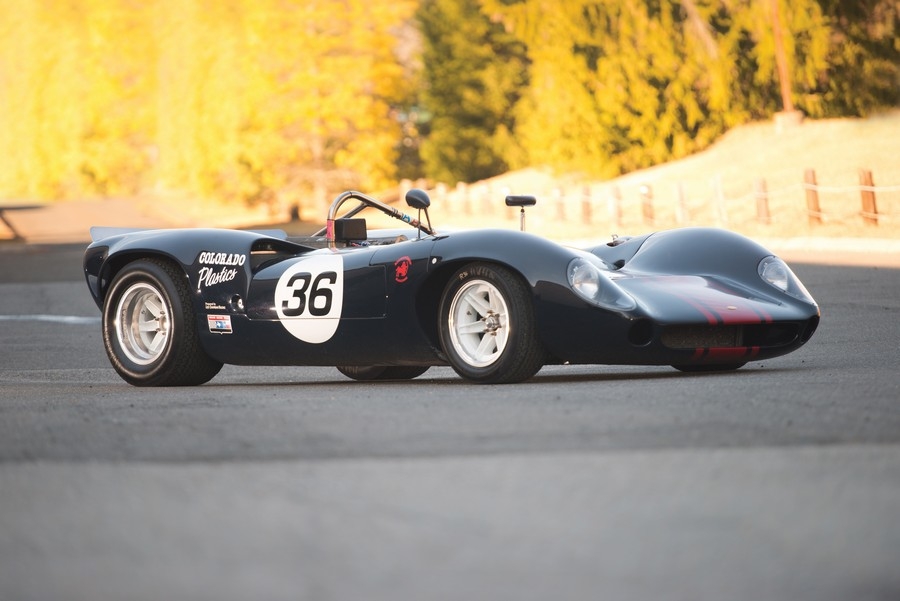Chassis Number: SL7136
Lola Cars was founded in 1958 by former Quantity Surveyor Eric Broadley, who was located in Huntingdon, England. His first “production car,” the Lola Mark I, was so superior that it immediately made obsolete Colin Chapman’s previously unbeatable Lotus 11s — as well as all Elvas and Coopers. One of Broadley’s most interesting cars was, of course, the Lola Mk 6 GT, which the Ford Motor Company later successfully raced as their GT40. Lola cars have claimed hundreds of victories in the past four decades.
Broadley’s early Lolas, beginning with his Mk I and up to and including the Lola T70 roadster and the T70 coupe, were also by far the most beautiful sports racers of their era. This 1966 T70 Mk II, s/n SL7136, was the last of 67 Spyders built, and it was sold by John Mecom, the original U.S. distributor, in 1966. Richard Galloway, whose Colorado Plastics manufactured Lego blocks, became the first owner, along with his designated driver, New Zealander Ross Greenville, with the latter having raced successfully in the Can-Am Series and SCCA Nationals, which included such race tracks as Bridgehampton, Laguna Seca, Las Vegas, Riverside, Road America and Watkins Glen.

